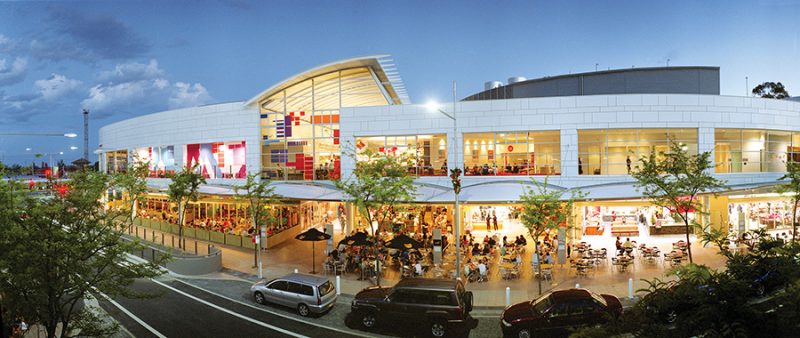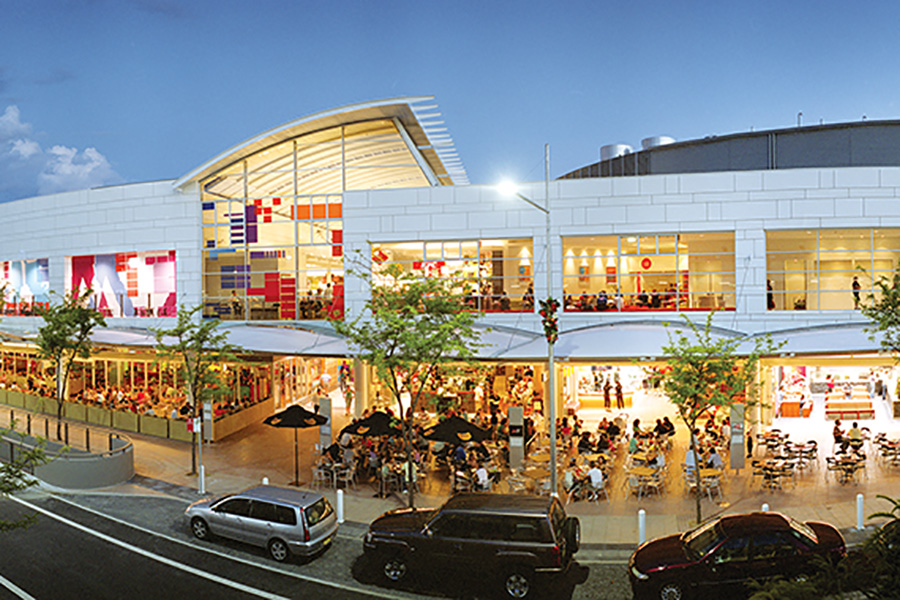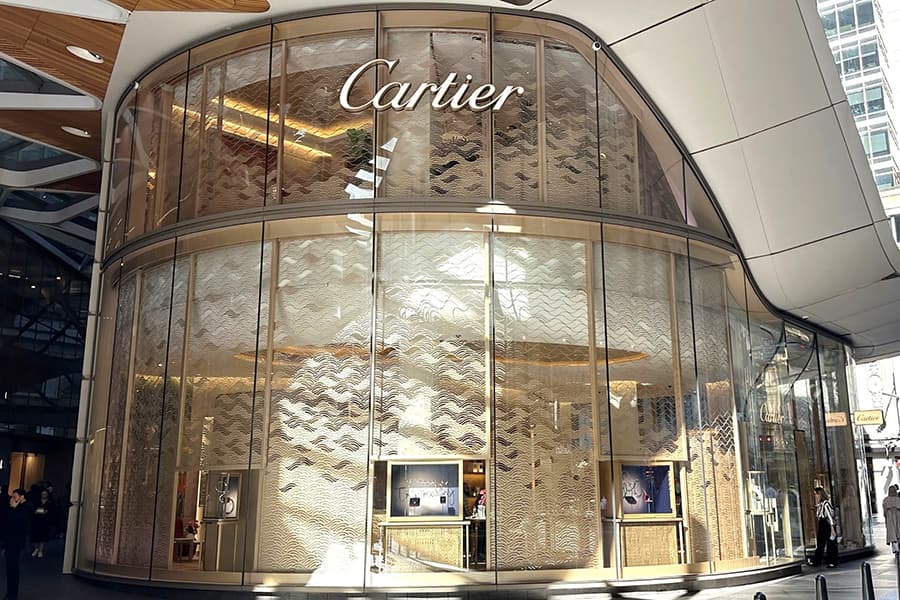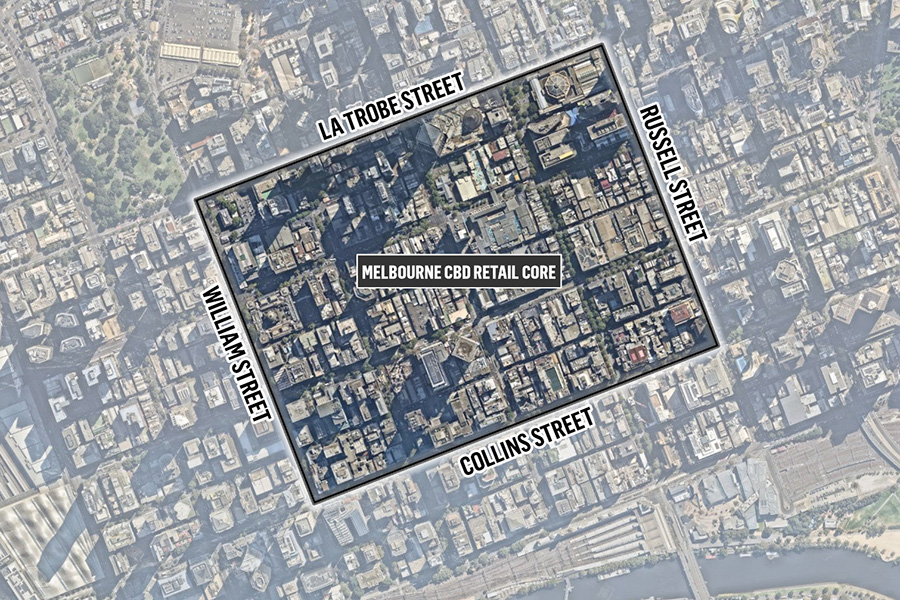One of our main features in this issue is ‘women in development’. Helen Bakewell joined this industry some 25 years ago. From a ‘rookie’ she progressed through the industry to senior levels. She reflects on the past and gives a personal view of shopping centre development with an emphasis on research.
Good quality research has always been the backbone of a successful development. I discovered this first hand with Lend Lease Retail in 1993, attending my first shopping centre opening of Penrith Plaza. As a young analyst, two weeks into my first shopping centre development, my first role with Lend Lease Retail was a baptism of fire. After reviewing financials, tenancy schedules and development plans, the consumer and development research was handed over. Coming from my valuation background I hadn’t encountered this type of research before, and this early encounter would shape my future career and education.
The consumer research opened up the lives of the people of Penrith and the Blue Mountains as to how they lived, shopped, what they valued, how they spent their time and what they thought was missing from the area.
Leveraging these insights into the development and executing the development in the Lend Lease style of the 1990s produced one of the most successful developments of the day. Executives flew in from all around the country and the world to see this outstanding asset.
Many of the people working on Penrith Plaza then moved onto Sunshine Plaza and Bluewater in the UK, which in its day was the most successful development in Europe. Today, many of our top property companies are run by the executives who first cut their teeth on Penrith Plaza.
Hundreds maybe thousands of shopping centre developments have occurred since this time, so when it comes to research what has changed and what has stayed the same? One thing that has definitely remained unchanged is that successful developments use good research to improve the value proposition of the development – just like at Penrith Plaza.

Penrith Plaza – Entry
Obviously the market is more complex today, complex in that it is no longer straight retail that is being developed, increasingly it is mixed use; often combining retail, residential, commercial and leisure offerings all under the one canopy. We used to consider these places as having different audiences and markets but these are now converging to become one destination.
It is not just happening in the suburbs of the 1990s. The retail market in particular has changed from suburban back to urban, local to global, mum and dad operators to national and multi-nationals.
Moreover, today’s large shopping centre developments tend to be carried out with a backdrop of consumer, technology and industry trends. Technology has impacted significantly, creating borderless retail and greater consumer choice. With increased competition, the need to create differentiated and memorable experiences that connect with the consumer is more important than ever. Consumers have the power with technology being a key enabler – getting their advocacy and endorsement early and across all aspects and stages of a development is critical.
Developments are increasingly complex, with harder financials, more competitors and increasing customer demands. While knowing what the locals think is important, knowing what is happening nationally and internationally across sectors and consumers is also critical. Today, most companies undertaking shopping centre developments do so with a robust industry view at their disposal that outline these trends and forecasts in detail.
Research as an industry has also changed enormously since the 1990s. Telephone surveys have been replaced with online surveys; focus groups have been augmented with social scraping and consulting boards and data has been a game changer. Data analytics is a key competitive advantage and value creation capability – hence research has revolutionised and transformed to become a key influencer and just as critical to executing a successful development as leasing, development, marketing and managing the asset.
So how do we maximise all this data and information into making our developments successful?
Let’s break it down into four steps to success.
Key steps in development
There are four main development steps in delivering a shopping centre project. Most retail management companies today, prior to undertaking a development, have existing economic and consumer market information on the centre. This will typically consist of a Quantium profile, Centre Assessment from Urbis, Dimasi or Location IQ and varied consumer behaviour information in a quantitative form (hard numbers of behaviour e.g. online surveys) and qualitative form (online consulting boards or face-to-face focus groups exploring the hearts and minds of trade area consumers).
But when it comes to investing millions of dollars to develop a valuable asset more insurance is required, deeper interrogation is required to better understand the potential supply and demand, risk, market needs and capacity and consumer views. Moreover it is expected by investor, government authorities and retailers.
The four typical steps in development delivery
There is generally a minimum of four fundamental requirements prior to any shopping centre development commencing, (ie formal approval for Stage 3):
• Land – is additional land required and secured?
• Majors – are they secured (AFL)?
• Contractor build cost secured and independent verification
• Financial metrics, commerce hurdles agreed and secured.
Fundamental to the financial metrics being achieved is that of the specialty rent. What determines specialty rental is derived from forecast sales that underpins sustainable rentals and occupancy costs for the retailers. The greater the debate and interpretation of market research and customer desires in stages 1 and 2, greater the accuracy in achieving forecast specialty sales and rental. The achievement of specialty forecast rental underpins the successful delivery of the project’s financial metrics. The role of research is to maximise the asset’s potential to the market.
Stage 1 – Masterplanning
So with a background of a corporate view and operational centre research what else is typically included during the masterplanning stage to inform the project’s financial metrics and deliver a successful development?
This stage of development starts with block planning and broad retail category identification and quantum for the asset. Working closely with the development/leasing team it is usual that the Development or Project Control Group (DCG/PCG) would rely on:
• Market and Centre Assessment with Initial Development Review – along with updating the operational asset market and centre assessment and a ‘do nothing’ scenario review, this will examine the highest and best use for the asset, the possible extent of any development and broad retail and non-retail categories with initial MAT projections. This will also include possible Trade Area changes and estimates, market shares, resident demography and identification of other markets such as worker, student, tourist etc. It may also incorporate other operational data such as Mosaic profiles etc.
• Quantium Report – feeding into the above assessment will be the updated outcome and affinity analysis of the electronic funds transfer financial data of historical spend for the centre and area with gap analysis a key feed from these reports. Customer behaviour data can also be integrated through accessing loyalty card data.
• Consumer Research – giving your customers a voice early helps to shape the development from the start. While there are a lot of common themes, values vary between communities and understanding the hearts and minds of your unique community is essential. It is just as essential to understanding why they spend their money as to how they spend their money. Consumer research is important to understand what consumers really value as a community and would fight to keep. We have all seen developers make the news when they have ignored the consumer!
• In the Masterplanning stage typically qualitative research is employed – this includes smaller number in-depth discussions with centre customers and/or trade area residents’ shoppers and non-shoppers. This type of discussion can be done face-to-face or online and may include only 40-50 people, but the analysis is in-depth and comprehensive and usually means hours of involvement from these participants and, as a result, they can often be a centre’s biggest word of mouth advocates in the community.
Trust me, this research usually has a hefty output of hundreds of pages to read and/or three to four different logins to access. I recommend a research manager be part of the DCG/PCG from the start to manage the research process, the briefs, budgets, delivery and dissemination and communication of all this information and turn it into development intelligence.
How well good research is used is the game changer in developments.
Here several crucial outputs are necessary.
1. Value Proposition – provides a summary of the qualitative and quantitative research quickly and uniformly explaining the community economically, socially and psychologically and what the ‘offer’ will be for the customer. Is there a point of difference through the retail, environment or sensory offer?
2. Business Case – is a summary of the incremental sales forecast to be delivered and how will these sales be split across the categories and majors, mini majors and specialty and, accordingly, the indicative occupancy cost and incremental rental for the project? This works in seamlessly with the Value Proposition. This approach allows all of the knowledge on the market place where the developing centre sits to be analysed and understood seamlessly.
3. Key Ingredients – a one-page summary outlining the key ingredients for success to the centre can be shared with the various teams including leasing, marketing and design etc so that there is a common foundation to inform all strategies about the asset. This can be used as a tool to assess initiatives along the way. It is also very useful when getting funding approval for development for investors to understand the unique direction being taken and fund allocation accordingly.
The research at Stage 1 articulates initial development potential through the economic, market and customer lens and interpreted into the value proposition, business case and key ingredients.
Stage 2 – Development Concept to Approval
Once a development project has in-principle approval for the Masterplan it is then down to the nitty gritty.
This is where the specifics of what will be developed is refined, how it will be leased and which consumer markets will be engaged.
At this stage there may be two or more development schemes moving forward from the masterplan in which case further economic scheme assessments from Urbis, Dimasi or Location IQ will be commissioned. Quantium brand and trade area testing may also be required to cement the retailer plan.
Food Area assessments such as Brain and Poulter food audits are also typically used to size and conceptualise the food catering market and delivery for the centre. This has grown in importance with the increasing reliance on food and beverage within MAT development assessments.
Customer Experience Audits are also common to maximise old and new centre build integration to enhance the design and customer experience of the future and existing centre.
Specific market deep dives are also common at this stage, especially if new consumer markets are being targeted such as student, worker, tourist etc.
And as the development plans evolve and become clearer, going back to the consumer for specific retail mix and design feedback and endorsement adds surety to the long development delivery stage. The Key Ingredients is a valuable tool here to assess design schemes.
Research in Stage 2 helps support the development plan concept, provide surety with owners through development funding and supports the development application submission process with authorities, with each of these being assessed against the underlying value proposition and business case.
Stage 3 – Development Delivery
Less is usually required at this stage. The level of research needed at this stage usually depends on the level of risk and or innovation being applied to the development. Some development managers like to confirm the detail of colour and finishes and when budgets start to run dry – hear from the customer on priority or choice model their A or B options.
Working with the marketing team, it is usually the marketing execution, launch, and customer engagement post the first six months that is tested here. And depending on the length of the development (say 3+ years) an economic market review may also be commissioned.
Stage 3 research supports the detailed design and launch platform to market, again against the value proposition and business case, with the Key Ingredients in constant play to inform a growing and sometimes changing project team.
Stage 4 – Stabilisation
Stabilisation is usually considered the first 12 months post a centre opening, but in recent years has been seen to extend to 18 months and even two years, usually depending on the success of the centre opening or complexity of the mix.
Here the development project team typically starts to wind down and move on to the next asset. Picking up the new development is the Centre Management team, usually they have been a consistent team throughout the development, but often this can change as well so handover at stabilisation becomes essential. It’s important the team inheriting the centre and responsible for delivering the Value Proposition, Business Case realisation and Key Customer Ingredients understand their foundations and importance, as at this stage, it is easily lost. This is where rubber hits the road, and all the best planning and delivery can mean nothing if management is not in the loop.
Post launch, the process of assessing customer impressions, winners and losers is typical via a customer quantitative assessment to gather views and behaviour of the new centre; this will be alongside the Quantium launch analysis to assess trade area penetration and retailer gaps and usage.
The quantitative assessment will usually be in a series of waves timed at intervals, depending on the time of the year. Similarly, the Quantium feed will be on a monthly or quarterly basis depending on the owner and asset requirements. A Centre and Market Assessment review may also be undertaken.
Qualitative assessments are also extremely useful six months post opening to deep dive with consumers the stand out successes of the development and where room for improvement remains – this can be extremely important for corrective funding were developments need some remedial work.
This research has been used successfully to fold into the next asset development within a portfolio for funding and commitment with retailers and investors alike, particularly those who are removed from the day-to-day retail business scene.
Stage 4 research informs development success and lessons learnt and audits the Value Proposition, Business Case and Key Ingredients as to their overall delivery and success.
Throughout each stage it is incumbent on the research manager to brief, assess proposals, manage budgets and, most importantly, simply communicate the key findings for the project all along the way with reference to the backdrop of the evolving national and global market place.
Employing this approach across a portfolio with consistent approaches also means that when teams move from asset to asset, state to state, they have consistency in understanding their new market, customer and development.
So when developing your next asset absolutely get the numbers on the development, but also get the conversation started with the people you want to have visit your development to find out – why they will come – with all the choice they have including staying on the couch watching Game of Thrones and ordering everything online, what is going to compel them to put on shoes and come visit your pride and joy that you have spent days, nights and weekends building?





















